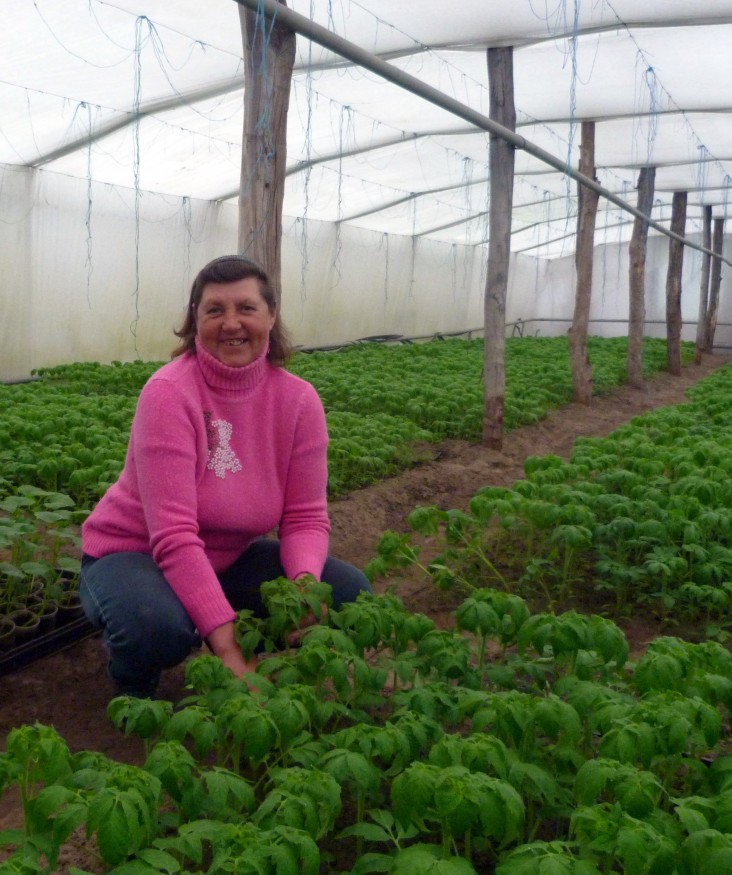
April 2015—For the past two decades, Natalia Bogdanova grew vegetables on her half-acre plot in Ukraine’s village of Mala Kardashynka in Kherson oblast. She built several plastic-covered greenhouses on her property to protect her seedlings from hail, strong winds and mild frost. But recent unseasonably cold winters extended into early spring, overwhelming the basic greenhouses and reducing cucumber and tomato yields.
At a USAID AgroInvest Project seminar in December 2014, Bogdanova learned about promising new cold-resistant hybrid vegetables and modern, efficient heating systems. She sought to apply the up-to-date methods to her greenhouses to prevent losses from unexpected temperature drops. However, she lacked the capital to purchase heating equipment.
In December 2013, USAID partnered with several credit unions to provide financing to small farmers to stimulate agricultural development. Yednist Credit Union issued Bogdanova a $2,500 (60,000 Ukrainian hryvnia) loan to upgrade her greenhouses. Since early 2014, three AgroInvest partner credit unions in Kherson oblast have originated loans worth more than $1,300 million (22 million UAH) to 583 owners of greenhouses to develop their farms.
“Thanks to USAID AgroInvest’s seminars, I received vital information on new and modern technologies for growing vegetables, and the latest machinery and equipment,” said Bogdanova. “I used this knowledge on my own farm to install heating for my greenhouses, which was a very expensive endeavor. I am grateful to Yednist Credit Union. They understand me, and their loan has helped our ideas to be realized.”
By early 2014, Bogdanova’s heating system was fully functional. She was able to plant hybrid seedlings recommended during the training three weeks earlier than usual. With the plants growing in more favorable climatic conditions, she started harvesting cucumbers and tomatoes a full 30-35 days early.
During the autumn, Bogdanova’s new heating system helped extend the harvest period by another 25-30 days. As a result, her 2014 harvest far exceeded her expectations, increasing her profit by 30 percent and enabling her to easily repay her loan.
AgroInvest, which runs from 2011 to 2016, provides assistance to Ukraine's agriculture sector to help accelerate the country's economic recovery and increase its contribution to global food security.
LINKS
Follow @USAIDUkraine, on Facebook







Comment
Make a general inquiry or suggest an improvement.